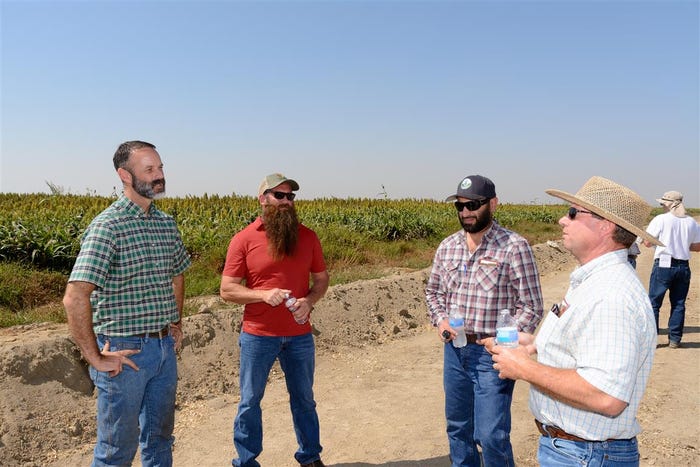
California sorghum growers get crash course in sugarcane aphid
The sugarcane aphid can be identified by its pale yellow color. Other identifying marks that can be seen with a magnifying glass include black cornicles, or tailpipes at the back end of the insect, and black tips on their feet and antennae.Chemical controls labeled for use in California can help somewhat, though these insects are said to be more difficult to kill than the light green aphids that can be more easily controlled with common insecticides.

<p>Sorghum growers received a crash course on the sugarcane aphid from UC entomologists at a field day near Pixley, Calif. </p>
California sorghum growers got a crash course in the sugarcane aphid from two University of California entomologists after the pest was recently discovered in the southern San Joaquin Valley.
Identified by the first crop it was identified in, the sugarcane aphid became problematic in Texas and Louisiana in 2013. A year later it had spread to at least 14 states, according to University of California Entomologist David Haviland.
Growers were invited to a hastily-called field day discussion in a sorghum field in southern Tulare County. The sugarcane aphid was visible in large numbers in the field, allowing participants to see first-hand what the insect looks like.
UC Entomologist Pete Goodell says the pest has been identified in Kern, Tulare and Fresno counties.
The sugarcane aphid can be identified by its pale yellow color. Other identifying marks that can be seen with a magnifying glass include black cornicles, or tailpipes at the back end of the insect, and black tips on their feet and antennae.
Chemical controls labeled for use in California can help somewhat, though these insects are said to be more difficult to kill than the light green aphids that can be more easily controlled with common insecticides.
About the Author(s)
You May Also Like





